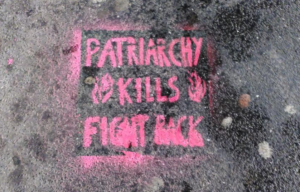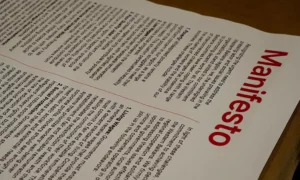The externalisation and militarisation of borders, the systematic creation of refugee camps, the illegal and violent repression by the border police, and the criminalisation of solidarity are fundamental pillars of the fortification of the European Union. With this report from one of the borders of Fortress Europe, we aim to describe and denounce the situation of people on the move at the borders, focusing on some migration hotspots in the EU and the Balkans, drawing on our experience on the ground.
Authored by David Pignata, an activist with ASCS’s Borders project (an Italian NGO working on behalf of migrants and refugees) and a transform! europe intern involved in the Migration & Global Strategy Working Group coordinated by Katerina Anastasiou, this document sheds light on the challenges faced by migrants and refugees near the Serbian-Hungarian border. David spent five days in Serbia near the Hungarian border in autumn 2022, witnessing firsthand the realities of migration dynamics in the region.
The migration route across the border between Serbia and Hungary has become increasingly busy in recent months. According to Frontex data, between January and July 2022, the number of people on the move in the region increased threefold compared to the first six months of the previous year[1]. This increase in people flows is in part due to Serbia’s visa-free policy towards Morocco, Tunisia, Egypt, Burundi, India, and Turkey. The visa-free access allowed people from these countries to fly to Serbia and then continue their journey to other European countries via the Balkan route. Under pressure from the European Union, Serbia has recently ended the visa-free policy to prevent an excessive increase in migration flows[2]. However, most of the people crossing from Serbia to the European Union come from Syria, Afghanistan, and Pakistan, countries not covered by this visa policy.
As the number of people at these borders increased, so did the number of pushbacks and violence[3]. According to official data from the Hungarian government[4], which has proudly claimed responsibility for the illegal practice of pushbacks since 2015, there have been 234,000 cases of pushbacks since the beginning of 2022, as of 1 November. Much more than in the whole of 2021 (122,000) and 2020 (6,000). As a result of the increased number of transits and pushbacks in recent months, many people are now in northern Serbia. The three official camps in northern Serbia are overcrowded, so people on the move live in informal settlements near the border. These settlements are regularly raided by the Serbian police, who occasionally evict the people living there.
In the last week of October, with the Italian volunteer organisation ASCS, I was on the Serbian border, close to the 175 km of fence built by Hungary in 2015. I joined the volunteers of the No Name Kitchen (NNK) and got to know the informal settlements in the towns of Sombor, Subotica, Majdan, and Horgoš.


Tavankut informal camp, visited a few days before eviction by Serbian authorities. Photo by Francesco Cibati.

Informal camp in Majdan, Serbia, near the border with Hungary and Romania. Photos by Francesco Cibati.
NNK is an independent movement that works along the Balkan and Mediterranean routes. The association has been present in Subotica since the beginning of 2022 and deals with medical care, distribution of food and clothes, legal support, and denunciation of abuses at the borders. The informal settlements where NNK operates are often abandoned buildings with only the walls remaining. Sometimes they’re just tents in the forest. In these places, there is no drinking water, which is a health problem as many people on the move suffer from scabies and other skin diseases that should be treated by a complete daily wash. That’s why NNK volunteers always carry a 750-litre water tank and portable showers in the squat.


Refugee settlement near Subotica. Photos by Francesco Cibati.
People living in the informal settlements told us that they were afraid of the coming winter. The border is only a few hundred metres away, but it is fenced, and people pay thousands of euros to cross without being sure they will. At Majdan, near the ‘Triple Point’ where the Serbian, Hungarian, and Romanian borders meet, the three border police forces cooperate closely, allowing for greater efficiency in pushing back people on the move. Most of the people we met had been pushed back several times by the Romanian police.

Mobile phone destroyed by the Romanian police. Photo by Francesco Cibati.
They all described a violent Romanian policemen, who usually steals mobile phones and money. It is becoming increasingly common for border police to take mobile phones from people on the move. Then they hack them, and once they are returned to their original owners, they can be traced immediately because their phones send out signals that can be traced by the border police.
The winter cold makes the situation even more urgent. This emergency situation, common to several parts of the Balkans, is fuelled by the policies of exclusion and externalisation of borders pursued by the countries of the European Union, which continue to allocate funds to make Fortress Europe ever more inaccessible[5]. Alessandro Leogrande, in his book La Frontiera, wrote that “the border is the thermometer of the world”[6]. The temperature (which indicates the state of health) of our seemingly democratic civilisation is measured by what happens on its borders. With the arrival of winter cold, what is the temperature that marks the thermometer of the world? The autumn premises have not been the best.
References:
1 Cf. Frontex, EU external borders in June: Western Balkan route most active., https://frontex.europa.eu/media-centre/news/news-release/eu-external-borders-in-june-western-balkan-route-most-active-oPV0mM.
2 Cf. Balkan Insight, Serbians’ EU Visa-Free Travel Threatened by Migration Policy, October 14, 2022, https://balkaninsight.com/2022/10/14/serbians-eu-visa-free-travel-threatened-by-migration-policy/.
3 Cf. Border Violence Monitoring Network, Illegal Pushbacks and Border Violence Reports – September 2022 Balkan Region. https://www.borderviolence.eu/balkan-regional-report-september-2022/.
4 Cf. Schengen Visa Info, Hungary Has Spent HUF 1.6 Billion on Border Protection Since 2015, November 4, 2022. https://www.schengenvisainfo.com/news/hungary-has-spent-huf-1-6-billion-on-border-protection-since-2015/
5 Cf. European Commission, EU increases support for border and migration management in the Western Balkans. https://ec.europa.eu/commission/presscorner/detail/en/ip_22_6276
6 A. Leogrande, La frontiera, Feltrinelli, Milano 2015, p. 16.
All photo, including cover photo by Francesco Cibati.



